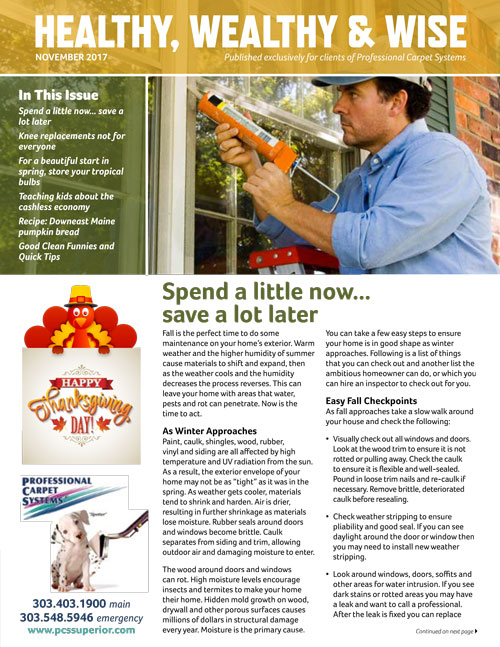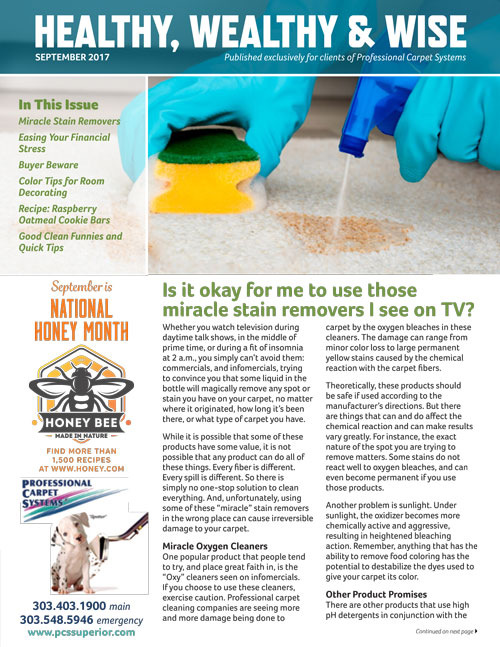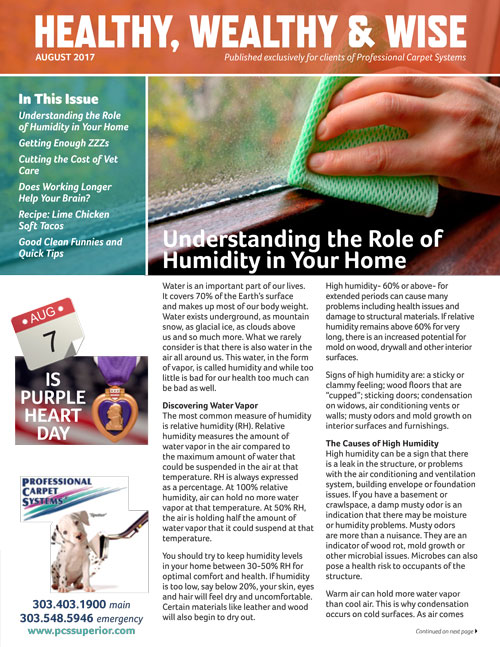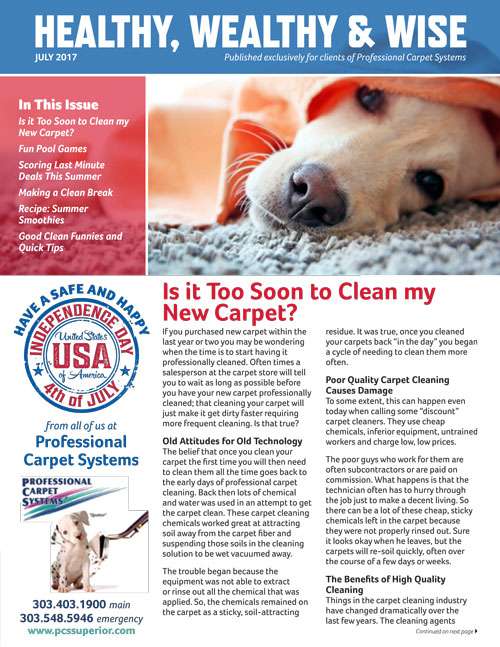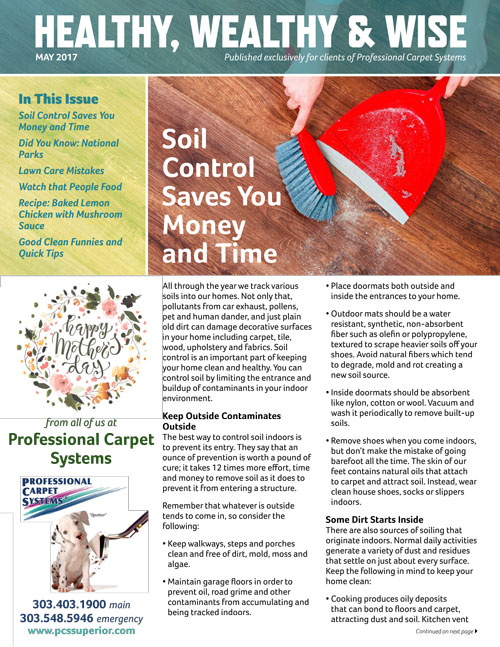Here’s our February 2018 client newsletter.

Click Here to See the Full Newsletter
What to do when you have a flood emergency
Floods happen, everywhere in the country. Water can come from a storm surge, broken pipes, poor landscaping and so much more, and you needn’t live near a dam to be in danger. How you handle a water intrusion usually has to do with the rate at which water enters a structure, the amount of water, the source of the water, and what areas are affected. Safety is of Primary Concern In short term water management, slip fall hazards, possible electric shock, biological or toxic contamination and other potential dangers must be considered before you take any action. In cases when there is a large quantity of standing water it is usually safest to turn off the electricity and gas to the structure before you begin any cleanup. Once you have determined it is safe to proceed, identify the source of the water, and stop the water intrusion, if possible. If it is from rainwater or other sources beyond your control, take steps to reduce the rate at which it is spreading. You can do this by placing towels to absorb the water, using a shop vac to extract the water, or even using a push broom or squeegee to push the water outside. If you have them, sandbags can help keep water out as well.
Cleaning Up The services of a professional cleaning and restoration company will usually be needed when the water has saturated building materials or furnishings such as carpet and pad. It is nearly impossible for a homeowner to remove water and dry a structure in a safe and efficient manner. This is because cleaning companies have the fans, heaters, other equipment and experience to dry water quickly. Often homeowner attempts at saving money end up costing thousands of dollars later on in the form of mold contamination and permanent damage to the structure. Many items that could have been saved by the quick response from a professional may have to be discarded, or undergo expensive restoration. A Plan of Action Your best course of action in the event of a substantial water intrusion is to ensure the safety of yourself and other inhabitants of the structure, determine the source of the water, try to stop or slow the entry of water, move sensitive furnishings out of the water as soon as possible, and call a professional restoration contractor to handle the extraction of water and structural drying.
Homeowners’ insurance may or may not cover damages from water intrusion, depending upon your policy and how the water entered. Many policies do not cover “rising water” or water intrusion from flood conditions unless you have specific flood coverage. Yet they will cover damage resulting from rainwater that enters the structure from above, as from a hole in the roof. You can get additional insurance to cover flood and other water hazards. Check your policy or talk to your insurance provider to see what’s covered.
No matter your policy type, most insurance companies require you to act fast and contact a professional restoration company to minimize damage and reduce the cost of the claim. That’s why if you ever have a water intrusion you should call Professional Carpet Systems immediately. Fast response and having the right equipment are both critical in getting your home back to a pre-loss condition as quickly as possible.

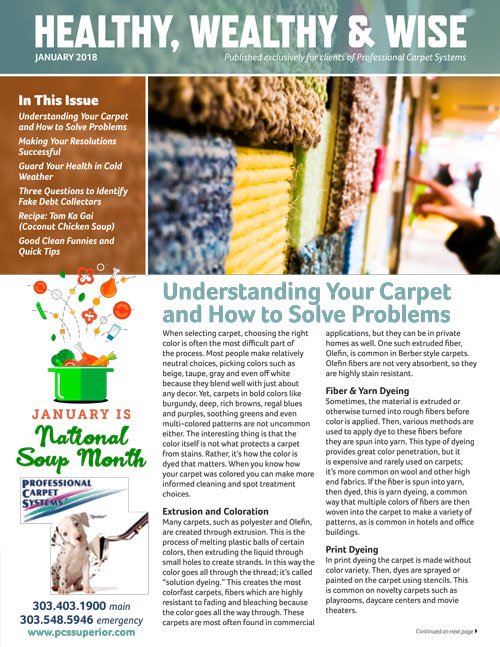
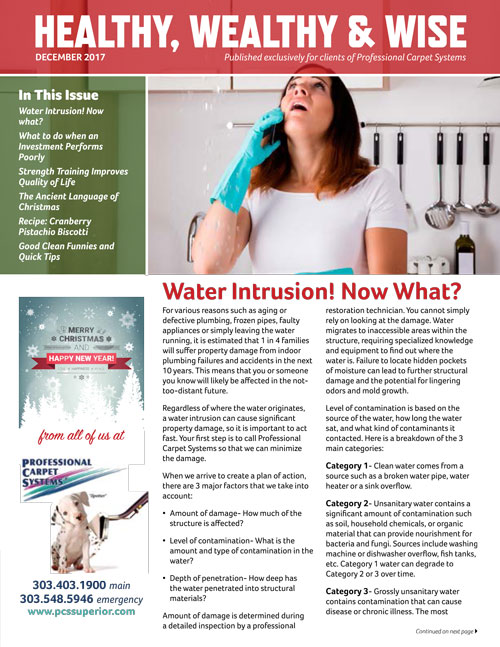 Click Here to See the Newsletter
Click Here to See the Newsletter